V. Sai Subramaniam

V. Sai Subramaniam who (along with vocalist Palghat Dr. R. Ramprasad) is the recipient of this year’s Kalki Krishnamurthy Award, is the first morsing exponent to receive the prestigious honour in the over 25 years since its inception. According to ghatam exponent G. Chandrasekara Sharma, Sai is, in fact, the only performing artiste in their age group in an instrument that is now only infrequently deployed on Carnatic stages.
A version of this article appeared in The Hindu newspaper dated September 17, 2021. All photos (unless otherwise specified) and music recordings, courtesy Sri. V. Sai Subramaniam.
The story of how Sai took up the morsing begins years before his birth. His father, C.S. Venkateswaran, had witnessed a concert of the Late Sirkazhi S. Govindarajan live at the Kapaleeswarar Temple for which Madras R.V. Pakkirisamy had played the morsing. Venkateswaran was fascinated by the sound of this instrument which he could hear but barely see. He then self-taught himself to play the morsing going on to perform in several semi-classical programs. As a result, from birth, Sai grew up seeing morsings around him.
Sai would tag along with his father when he went to concerts. When he was about 5, Sai picked up a morsing, tried to play it, imitating his father. “I was completely unable to produce any sound at all.” Later, he picked up the instrument at age 9 and successfully produced the characteristic twangs. “If I was surprised, my father was even more shocked. He mentioned that it had taken him 4 months to extract any sound from it.” Sai explains that he later realised the first instrument he picked up had been of a 4.5 sruti and the second about 1. The higher the sruti, the higher the harder to produce sound in this instrument. Nevertheless, Sai did appear to be a natural and could produce most of the sounds without struggle. His father showed some small naDai-s (gaits) and kOrvai-s (mathematical combinations in two parts – pUrvAngam and uttarAngam) that he reproduced rather effortlessly.
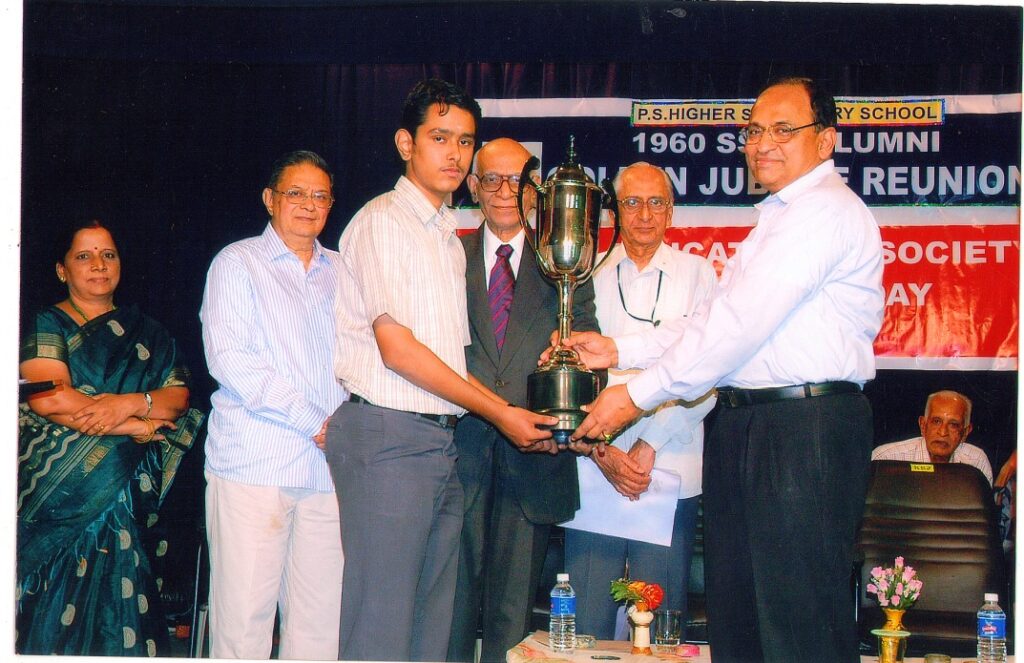
The impetus for more formal lessons came, interestingly enough, from a fancy dress competition at his then school, St. Mary’s, in Tambaram. “My father suggested I wear a turban and go as a morsing artiste. More than the costume, the reception I received for my morsing playing was unimaginable. From teachers to students, everyone crowded around me wanting to know what produced that interesting sound.” Soon after, the family moved to Mylapore where Sai joined PS High School. His father thought he should receive proper training on the instrument and enrolled him with Kalaimamani A.S. Krishnan who was a former neighbour and was known to Venkateswaran through meeting at musical akhanDam-s and other programs. Krishnan, a highly regarded morsing exponent who has played for many leading artistes, took on Sai right away.
Since Sai already knew to produce the various sounds in the instrument, the basic lessons progressed to advanced ones quickly. Classes were twice weekly and involved learning naDai-s and kOrvai-s. From two years later, when he was 13, Sai began performing. “I played whatever I had learned at those concerts and observed what was received well and what was not, both by the musicians and the audience.”
An only child, Sai was the school topper at PS High School and received a scholarship for much of his school education. His family was of meagre means, his father retiring (when Sai was 15) as clerk at Lady Sivaswamy School. “I would accept any and all concerts then. The remuneration I received was a crucial addition to the family income.” He sees it as having been a very good thing. It gave him a drive to perform that resulted in significant early stage exposure to not just Carnatic but jugalbandhi-s, nAmasankIrthanam, harikatha, bhajan-s etc., and a wide range of artistes and venues. He was part of Sulochana Pattabhiraman’s children’s group and Ramjhi’s Isai Mazhalai, besides the Youth Association of Classical Music (YACM).
These forums served as an early introduction to many of his current contemporaries whom he continues to play with including J.B. Sruthi Sagar, Praveen Sparsh, Vasudha Ravi, Sumesh Narayanan, Vidya Kalyanaraman and many more. Other artistes he has played with include Suguna Varadachari, O.S. Thiagarajan, Thiruvarur Bhaktavatsalam, Maharajapuram Srinivasan, P. Unnikrishnan, N. Vijay Siva, Prince Rama Varma, O.S. Arun, Patri Satish Kumar, Akkarai Sisters, Abhishek Raghuram, S. Mahathi, Chinmaya Sisters and many more.
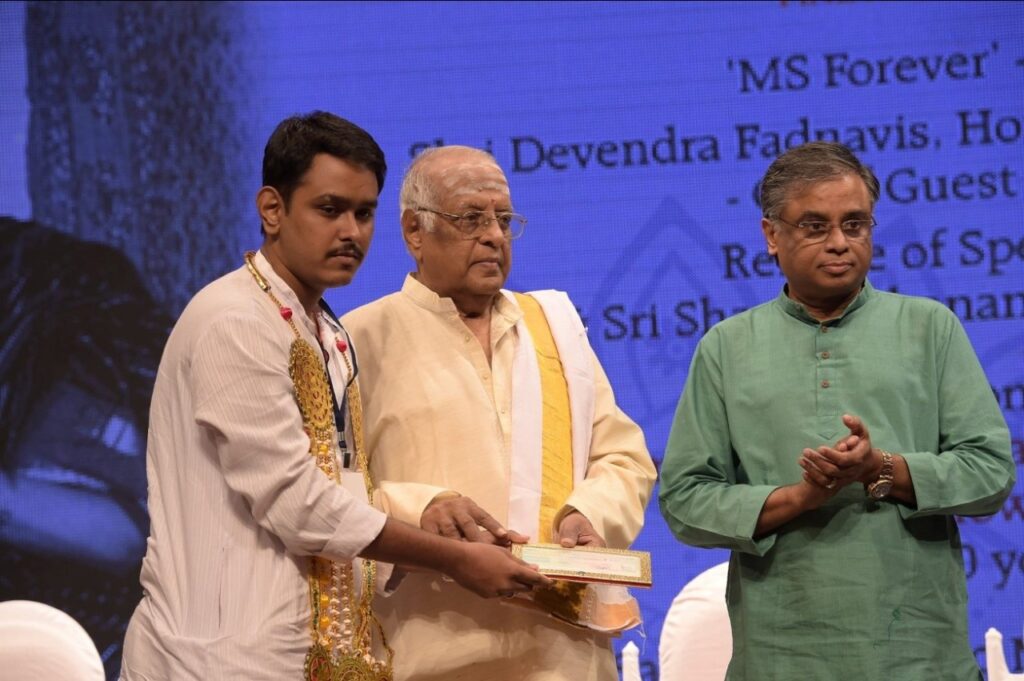
On his tutelage, Sai says, “Sir would teach both by playing the morsing and the mridangam. When he played the mridangam, he would ask me to reciprocate in the morsing which improved my ability to decipher mridangam phrases. My task was not merely to reproduce but to notice how, where and what to play to appropriately compliment him. My Guru and I would have frequent discussions on combinations, kOrvai-s, abhiprAyam-s (logical mathematical rhythmic combinations that are not in kOrvai format) etc., through which he enabled me to create those on my own.”
Chandrasekara Sharma, who has known Sai from Sai’s second ever concert, explains that he is one of the rare few morsing players who can play the instrument without the underlying konakkol phrases being heard at all. “It takes immense skill to do that in an instrument with very limited scope. Yet, he can match the play of other percussionists, complicated mathematics and beyond. Furthermore, his attunement to sruti, critical on the morsing, is impeccable.”
In most Carnatic concerts, the mridangam is considered the primary percussive instrument. The ghatam, kanjira and morsing, as ancillary percussion, follow the lead of the mridangist. With the ghatam and the kanjira, this translates to reproducing/replicating the mridangam as best as possible in their own instruments which, admittedly, have lesser available tones. However, the morsing is a different cup of tea altogether. In its ability to blend the treble of the mridangam’s bass with the sruti of the tanpura, it is unique in being a melodic instrument used percussively (in Western folk traditions, it is generally part of the melodic, rather than percussive, ensemble). Thus, a morsing artiste cannot merely reproduce the mridangist’s playing.
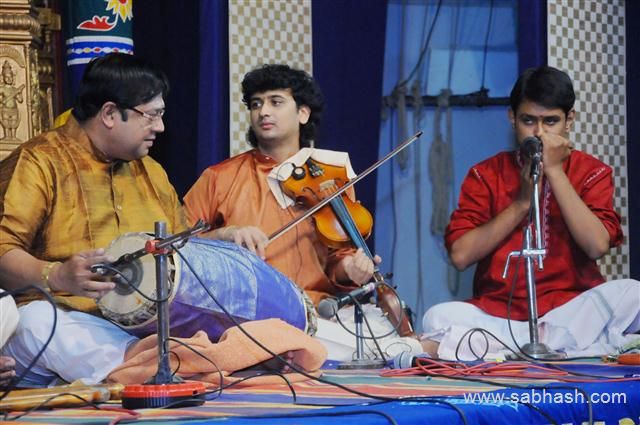
Many musicians also wonder whether the morsing will ‘fit’ their music well. K.J. Diliip, violinist and a student of the late M.S. Gopalakrishnan explains. “There is a general perception that the morsing does not suit the violin or other stringed instruments. This is because the morsing is very sensitive to sruti. However, if it is tuned well, it jells with vocal, violin and other instruments like any other percussion instrument.” Diliip has shared the stage with Sai Subramaniam several times. “Sai builds a very good rapport with other artistes on the stage and is open to trying new things. This opinion is shared by many others as well, reflecting his ability.”
Sai says that it is the mental thought process that is crucial for him, more than the physical practice on the instrument. “My mind is on music literally 24/7. Any ambient sound will make me ruminate on grooves.” He says that even in momentary breaks, his mind keeps running over percussive aspects. He does not earmark a specific practice duration but there are days when he will play for hours together, he states. In general, he says he has been able to execute what comes to the mind on the instrument.
The challenge, he states, is in rising to the occasion spontaneously at concerts. For example, during neraval and swaram, an interesting juncture is when the lead melodic artiste is switching gaits or is attempting to. Sai explains, “Often they are themselves thinking and are yet to decide exactly what gait they will pick up. The violinist may or may not follow that either.” In such situations, one must go with the flow. Sai says he ensures that what he plays, at the very least, is not intrusive or disturbing to the thought process of the other artistes. “There are also some things that I will play at a concert without conscious thought. If you were to ask me to reproduce it later, it might not come. But at that moment, with the adrenaline pumping, some things just happen.” He says there have been several occasions where he has pleasantly surprised himself with what he has produced at that spur of the moment.
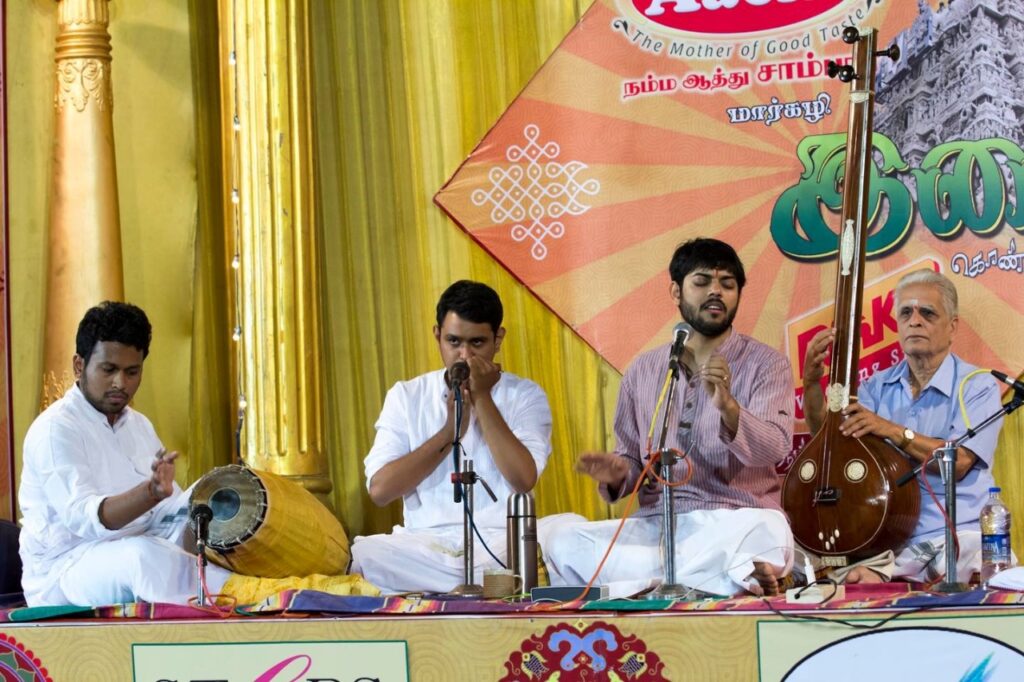
He shares further thoughts. “If I see that the vocal and mridangam have blended so well that they are following each other to perfection, I do not play at that time – for, even if I am a fraction off, it can detract from that unity. Otherwise, if I am following a song, I use what the mridangist is doing as a guide – but I cannot follow him exactly. I should think of how the morsing can augment what the mridangam is producing to make it sweeter and accent better. Therefore, I cannot say I am following the mridangam or the music – it might have the pattern of the mridangam but I will play what will suit that song best. Knowing where not to play is actually critical in morsing. Keeping silent appropriately will raise the overall effect of the concert.” He says that knowing the compositions is very helpful, particularly with tillAnA-s that are often set in particular rhythmic patterns. “When I don’t know a song, I will go with the flow of the mridangist and we will adhere to each other.” He will moderate the volume of his playing according to how the melody artistes are singing/playing – if they are singing or stressing something, he feels the effect is best if he is gentle/soft. He adds that he visualises the pallavi of a rAgam tAnam pallavi as sound and not in terms of mathematics. He firmly feels that the beauty of the piece, and his playing, will be destroyed if envisioned purely as mathematics.

Chandrasekara Sharma comments on Sai’s keen acumen and his desire to keep learning. “He is very quick on the uptake. If we discuss some rhythmic structures, he will not stop with just understanding it. Besides further exploring and developing it, he will compose something incorporating that structure and see how it can be properly conveyed on the morsing. Double speed nuances, for example, are really hard to play on this instrument. He has put in a lot of effort to keep to the desired tonality of the instrument.” Sharma feels that more artistes might be aware of Sai’s creativity and thought processes had he, perhaps, been a practitioner of another, more prevalent, percussion instrument. He says it is very courageous of Sai to take up the morsing without any peers in his age group. “He is keeping the art alive.”
How does Sai adjust to different types of mridangists? For, besides the various styles, there is tremendous variation in how much opportunity they give their co-percussionist on stage. Sai feels that it is less a particular mridangist and more the specific day, stage and the combination of artistes, as inexplicable as it might seem to him and others.
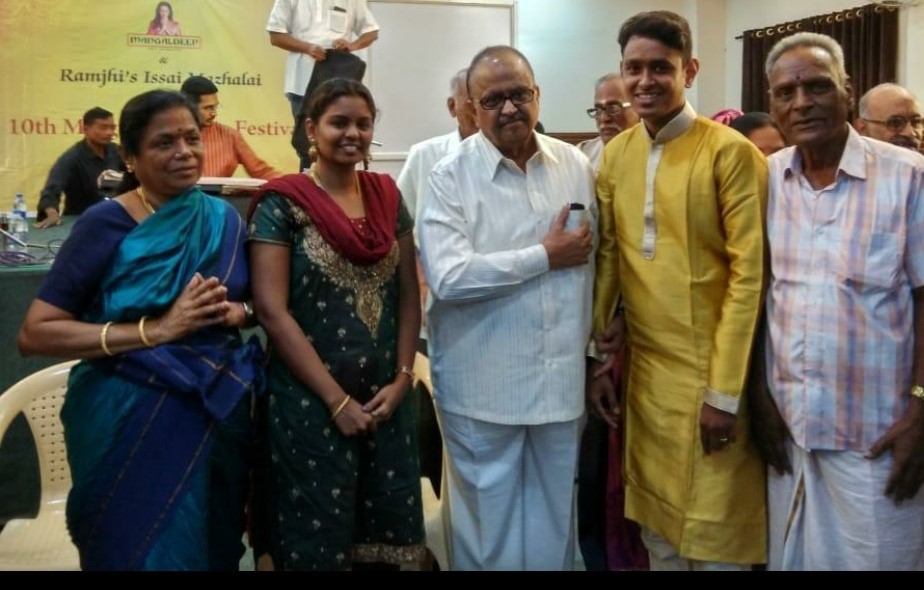
Sai wishes to challenge himself and showcase something new, adding value and creating impact, at each and every concert. “If a particular engagement offers me the chance to do that, I would prefer that over another program with higher remuneration.”
Sai has been on multiple tours abroad including to Sri Lanka with Maalavika Sundar, Scotland with violinists Dr. M. Lalitha and M. Nandini and to the UAE on several concerts with multiple artistes. He has won many awards including the M.S. Subbulakshmi Fellowship in Music from the Shanmukhananda Fine Arts and Sangeetha Sabha in Mumbai, Best Percussionist Award from the Krishna Gana Sabha at its Gokulashtami Series, Finalist in the Percussion category of Carnatic Idol and many more. He won All India Radio’s National Level Music Competition in 2010. He is a graded B High artiste.
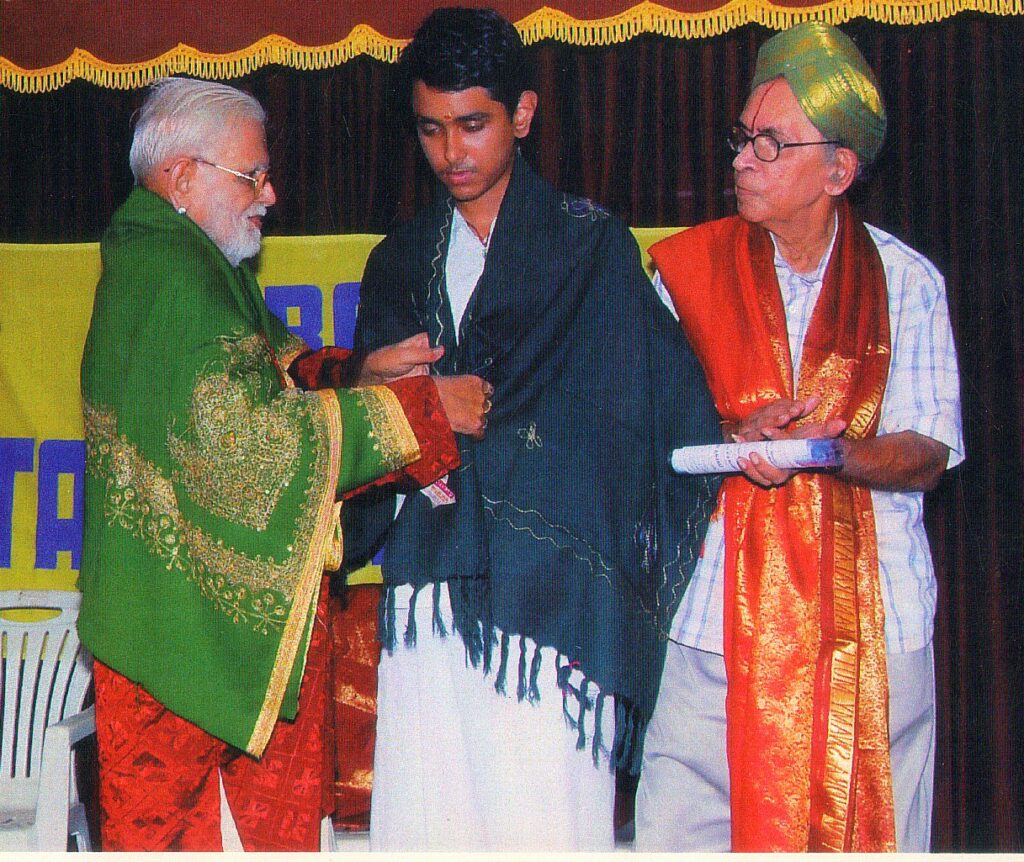
Just as depositing all one’s funds in one investment is ill advised, Sai says that to think of sustaining oneself on purely morsing is neither advisable nor feasible. He mentions that at one point he wondered if he should dedicate himself to music full time but, as one good in academics, his Guru advised him to pursue studies. Sai is a Chartered Accountant working in a major bank and is on his way to becoming a Company Secretary too. A finance buff, he reads financial blogs regularly.
With a full-time job and concert engagements, he is personally unable to commit much time to teaching but says that there is demand for learning morsing – mainly from those of Indian origin living abroad and a few foreigners too.
His other passion is Chess and he played in many state level competitions as a child. There was a time when he considered taking on chess with more zeal but that would have required more extensive coaching which the family could ill afford. He now plays online, finding it to be an excellent stress buster.
Does morsing have a sustained future in Carnatic Music? Sai likens it to running and Usain Bolt. “Until Usain Bolt came to the scene, interest in running had waned for the many years prior to it.” He says that there similarly needs to be a morsing exponent who blows everyone’s mind such that questions of suitability to the music etc. do not even arise. Musically, he mentions the ghatam’s indelible association with T.H. Vinayakram and the kanjira’s with G. Harishankar. One hopes that young Sai Subramaniam can continue in these lines and bring about a renaissance in the morsing.
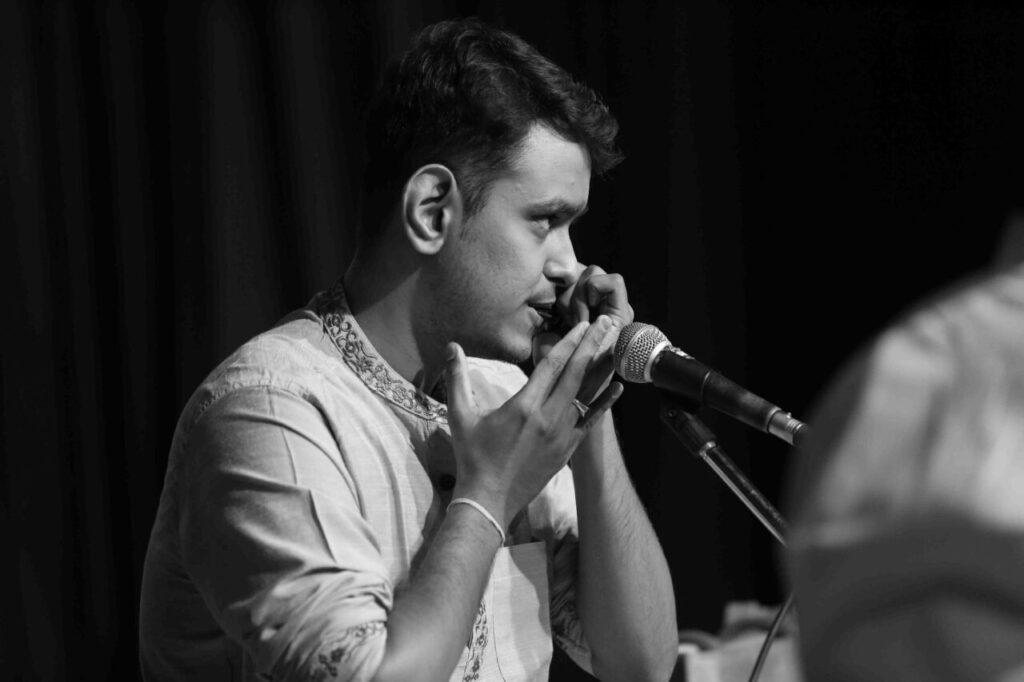
Related Links:
Excellent write up and Mr.Sai deserves all the accolades. He is a smart banker who has also managed to excel in his music domain. Keep up the good work. Sky is the limit. Cheers !!
Thank you.
Very interesting and well presented article. Intrigued by the sound this small instrument could make and all kudos to Sai Subramanian to take this artwork forward. He is an example to younger generations. Such inspiring articles are a source to get the message forward.
Thank you.
A very well written article. Good insight into Shri. Sai and his contribution to the musical industry through keeping the skills of morsing alive and also an inspiration to the next generations to take it up and keep the traditions kicking. I was really fortunate to attend one of Sai’s musical sessions in Abu Dhabi, UAE and was spellbound by the performances. Such a down to earth person with a humble beginning, his perseverance & dedication is really commendable. I wish him all the success in life & many more accolades to him.
Thank you for reading and sharing your experiences.